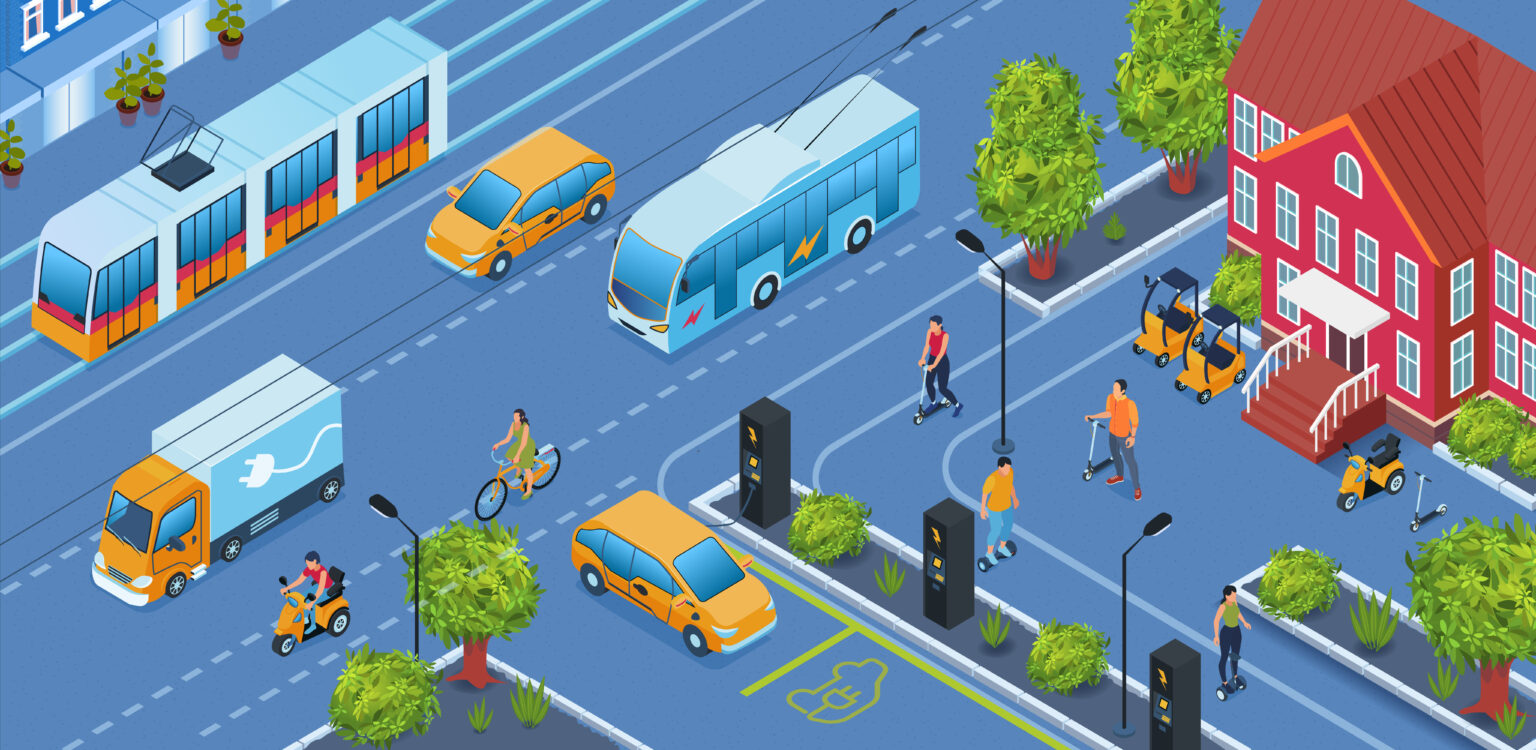The growing global need for transport makes it urgent to find solutions capable of ensuring environmentally friendly, cleaner, safer and more efficient mobility for all.
The concept of soft mobility, also known as environmentally responsible mobility or non-motorised mobility, is one of the fundamental pillars of green cities, which are designed to be environmentally friendly, economically viable and socially just.
The need to reduce greenhouse gas emissions to reach carbon neutrality by 2050, as well as the reduction of car traffic in daily commuting and the problems associated with urban mobility, have encouraged public administrations to adopt new measures, such as restricting car circulation in certain areas, but also to promote soft mobility methods, such as incentives for the use of public transport, car sharing and cycling. In addition, municipalities have invested in the construction of new urban mobility infrastructure, such as interfaces, bicycle lanes, pedestrian infrastructure and parking facilities, among others.
The implementation of these infrastructures, which are outlined in national and international mobility plans, and which appear as part of the solutions to achieve carbon neutrality objectives, aim to respond to the needs of citizens, while responding to the paradigms of the ecological transition, encouraging and contributing to more sustainable behaviour and the adoption of new daily mobility habits.
In this way, we are seeing citizens increasingly using multimodal transport for their journeys, but also a reduction in reliance on individual vehicles and the use of soft modes such as ridesharing and public transport, as well as greener and more active travel options such as walking, cycling and scooters.
Public transport, such as buses and metro, play a key role in combining different modes of transport, helping to reduce congestion, reduce pollutant emissions and improve the quality of life in cities. However, their effectiveness needs to be ensured to represent a realistic solution, responding to the challenge of providing the public with information on available timetables, with real-time estimates of vehicle arrival times at upcoming stops, allowing passengers to effectively manage their time and choose the right transport. By ensuring that this happens, it increases the credibility of this mode of transport among citizens, which translates into an increase in the use of soft modes when choosing to travel, in particular the use of public passenger transport.
Shared mobility is also a growing reality in large urban centres, emerging as a smart alternative to private car use. As well as having economic advantages, it reduces traffic and pollutant emissions. It includes car sharing to move several people, for example through the TVDE (Individual and Paid Transport of passengers in uncharacterised vehicles from an Electronic Platform), but also carpooling and car sharing. And also the rental of scooters, bicycles and electric scooters.
The transition to non-motorised modes of transport, such as bicycles, scooters and walking, brings numerous advantages that improve the quality of urban life. However, there are obstacles to overcome, such as the lack of adequate infrastructure, the need for harmonious sharing of roads and public awareness of the adoption of these modes of travel.
The benefits of non-motorised vehicles and soft mobility include the reduction of air and noise pollution. It also frees up public spaces for parking and interchanges, which are given a new lease of life and transformed into green areas, social or commercial spaces, improving the urban environment and pedestrian safety. Moreover, soft mobility is also associated with health, as the use of active means of transport that require physical effort, such as walking or cycling, promotes a healthier and more active population, contributing to the physical and mental well-being of the people who adopt these modes of travel.
In this way, by adopting the principles of the UN Sustainable Development Goals, investing in soft mobility infrastructure such as safe pavements, well-marked bike lanes, along with educational campaigns and encouraging active urban mobility, we enable cities to achieve higher levels of sustainability, health and inclusion.
With this in mind, we are aware that the collective awareness of society is a very important part of this process and must be reinforced, as mobility is largely the result of individual choices, as corroborated by the findings of the first Europ Assistance Mobility Barometer, which highlights that ‘although Europeans are aware that environmental issues must be a priority and that efforts must be made to change mobility habits, only a small percentage really feel uncomfortable using the car, and even if other factors such as the pandemic and inflation contribute to changing behaviours, change may still take some time’.
The debate on urban mobility is therefore essential to raise awareness of the importance of this sector in the development of environmentally responsible and inclusive cities, allowing us to identify greener solutions that promote efficient, safe and accessible transport for all.
As we move down this path, everyone must realise the importance of adopting more sustainable mobility methods, such as soft mobility, to achieve a green future based on what we want to be truly environmentally friendly cities. However, moving to more sustainable transport means rethinking cities and putting users first, offering them cheaper, more accessible, healthier and cleaner alternatives.
Links:
- https://www.consilium.europa.eu/pt/policies/clean-and-sustainable-mobility/
- https://linktoleaders.com/a-descarbonizacao-da-mobilidade-urbana-em-2050-e-uma-questao-politica-a-tecnologia-ja-existe-luis-amaral/
- https://smart-cities.pt/opiniao-entrevista/mobilidade-suave-como-otimizar-e-monitorizar-os-seus-investimentos2903/
- https://essenciadoambiente.pt/portugal-pais-gasta-mensalidade-mobilidade/
- https://www.itf-oecd.org/
- https://www.tecmic.com/transporte-intermodal/
- https://transport.ec.europa.eu/news-events/news/european-mobility-week-3000-cities-showcase-their-approaches-sustainable-urban-mobility-2023-09-15_en
- https://transport.ec.europa.eu/news-events/news/european-mobility-week-3000-cities-showcase-their-approaches-sustainable-urban-mobility-2023-09-15_en
- https://transport.ec.europa.eu/transport-themes/sustainable-transport_en
- https://transport.ec.europa.eu/index_en
- https://www.e-konomista.pt/mobilidade-partilhada/
- https://marketeer.sapo.pt/mobilidade-partilhada-vai-representar-7-de-todas-as-deslocacoes-ate-2030/
- https://www.imt-ip.pt/sites/IMTT/Portugues/Planeamento/DocumentosdeReferencia/PacotedaMobilidade/Documents/Pacote%20da%20Mobilidade/Gloss%C3%A1rio_do%20Pacote%20da%20Mobilidade%20.pdf



